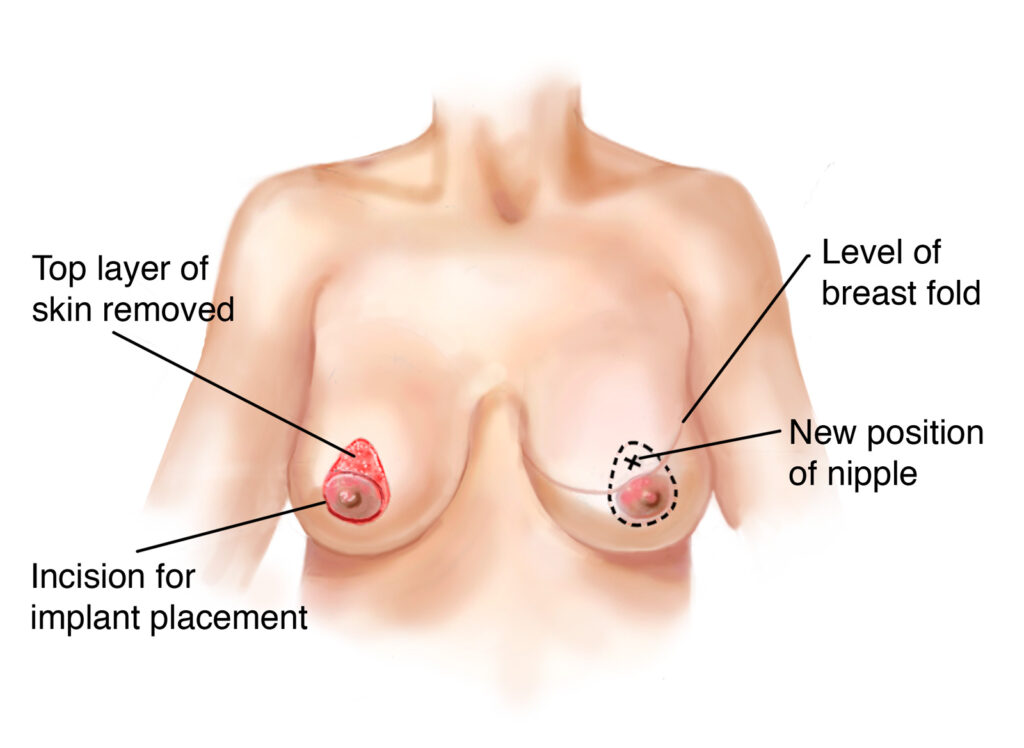Nipple Reconstruction Surgery
Nipple Reconstruction Surgery Overview
Nipple Reconstruction Surgery - If one or both of your nipples were removed when you had a mastectomy, you can in most cases choose to have surgery, tattooing, or both to recreate the nipple and the areola (the dark area around the nipple). Some people find that having their nipples reconstructed or tattooed is an important final step in the breast reconstruction process. Others don’t. The choice is completely up to you, and you can take your time to decide.
Welcomr to our
DrY Cosmetic Plastic Surgery & Hair Transplant Center
Nipple Reconstruction Surgery - Plastic Surgeons usually recommend waiting at least 4 months after a breast reconstruction surgery to have nipple reconstruction or nipple tattoos. This will give your breasts time to heal and settle into a final position. It’s also best to wait until you’re fully satisfied with the rest of your reconstruction. Rarely, some surgeons may offer the option of performing the nipple reconstruction as part of breast reconstruction surgery (rather than as a separate surgery). This is generally not recommended because it can result in poor positioning of the new nipples.

Types Of Nipple Reconstruction
During nipple reconstruction surgery, a surgeon will use skin from the breast or another part of the body to rebuild the nipple on top of the breast mound. They will try to build the new nipple to match the size, shape, and color of the original one.
People can speak with their healthcare provider about the potential costs and benefits of this procedure.
There are several different types of nipple reconstruction surgery. Surgeons will take people’s condition and personal preferences into account when advising on which method may be best.
Types of nipple reconstruction method include:
Skin flap reconstruction
A surgeon can raise small flaps of skin from around the area where the intended nipple location is to be. They will then fold and sew together these skin flaps above the level of the surrounding skin, creating a bump that will become the new nipple.
Skin graft reconstruction
To create a nipple from a skin graft, a surgeon will take a small piece of skin from a different part of the body — such as the inner thigh, stomach, or buttocks — to create the areola. Depending on the amount of available skin tissue, they may be able to construct the nipple from the skin of the breast mound.
This procedure works well if there is not enough skin tissue on the breast mound to create both the nipple and the areola.
Medical tattooing
Once healed, a person may choose to get a medical tattoo over the top of a reconstructed nipple to make it look more natural. This can help create the pigmented areola.
A person can also choose to skip nipple reconstruction surgery and get a nipple tattooed directly onto the breast mound. There have been many recent improvements in nipple tattoo techniques. One example is 3D tattooing, which uses shading and shadow to create the appearance of a raised nipple.
How To Prepare
According to the American Cancer Society (ACS), nipple reconstruction surgery usually takes place 3–4 months after breast reconstruction surgery, giving the new breast time to heal.
A doctor may ask the person not to consume any food and water on the night before the procedure. They may also recommend that the person stops taking certain medications for some days leading up to their procedure.
Sometimes, however, a surgeon can perform the procedure using only numbing medicine on the breast.
Recovery
While the nipple heals, it might look more erect than usual, but it should flatten a little over time. People can also expect some tenderness in the new nipple as it heals.
People may use a plastic nipple protector and a surgical bra to protect the new nipple from injury. A surgeon or nurse will give people specific information regarding:
- how long to wear the bra and bandages
- how to care for and clean the new nipple
- when to return for the postsurgical exam
During recovery, a person should try to avoid using soaps that contain harsh chemicals when cleaning the new nipple. People can apply antibacterial ointment to the healing nipple to avoid infection.
However, it is always best to check with a doctor before using any new medications or ointments.
Side effects
The ACS list the following possible side effects of nipple reconstruction surgery:
- bleeding
- swelling from fluid
- buildup in the breast
- infection at the site of the surgery
- fatigue
